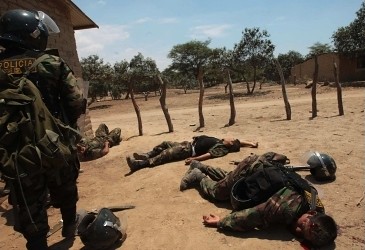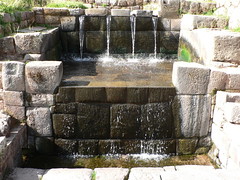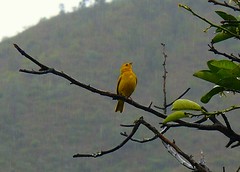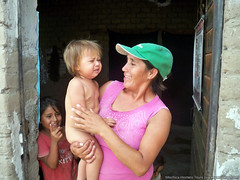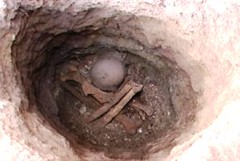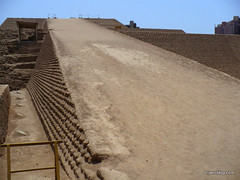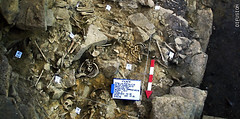We arrived in Ayacucho in the morning, with nowhere to stay for the week of Semana Santa. We knew this wasn’t a good idea but assumed we’d find somewhere if we spent the first day looking. We almost didn’t, everywhere was fully booked from the cheapest to the most expensive hotels. Luckily we found a small hostal that seemed the be clean with friendly staff.
Category: "Travel and Places"
Los Barrios Altos
Fine architecture, grand buildings, horse drawn carriages ferrying around the rich. This affluent area is adjacent to the city centre laid out by the conquistador Pizarro and dates back to not long after he founded it.
Quinta Heeren
The Quinta Heeren is a residential housing development that was built between 1888 and 1930. The first such large scale development of its kind in Peru, it was the brainchild of Oscar Heeren, a German businessman and diplomat. On the 30,000 square metres of land on the edge of the city (now a good few kilometres inside it!), in grand style, Heeren built a self-contained community, with the open space of a main square, a public garden and even a small petting zoo. It was very suburban.
Plaza San Martin, Central Lima
The buildings in the plaza seem to have been cleaned or repainted as part of the restoration of central Lima.
La tapada limeña
The muslim Moors who conquered much of Spain left their mark there – for hundreds of years after the Christian reconquering many Islamic traditions continued to be followed in the south. The Moors impact on Spanish culture is visible in the language, the architecture and typical dress.
In South America these Islamic influences were brought from Spain by Spanish immigrants in the times of the various vice royalties – during Spain’s colonial height.
Barranco – Slope of the Baths
The history of Barranco is here, but what I neglected to mention was the most important part. It’s not important for what happened there and no Chileans destroyed it. It’s important because it’s the natural feature for which the town was named. This natural feature is a ravine that is cut into the cliff and runs down to the beaches below.
Barranco
Not far from the village of Surco and some way from the city of Lima was the fishing village of Barranco. Time passed and Barranco became a small town popular with Lima’s elite – many of whom decided to build large lavish houses there.
For a while Barranco was named the City of Windmills as each home in the area had a windmill on its property to pump water from wells. More time passed and Barranco became a popular seaside resort coping with an influx of rich Limeños and foreigners building country homes there. Many of the foreigners at this time, around the late 1700’s, were British and German. Still, despite increased development into the 1800’s the town was an calm oasis in the desert, with sufficient supplies of water and trees to be seen everywhere. It was peaceful – but not for long.
Barranco – Iglesia de la Ermita
Barranco, long since swallowed up by the huge city of Lima, was once a tiny distant fishing village. Legend has it that one winter, while out fishing, a group of fishermen were lost in Lima’s legendary sea mist. After praying and searching in vain for hours in the darkness they noticed a glittering light in the distance. Rowing towards it, they ran ashore and were saved. They climbed the cliff to where they had seen the light and found nothing but a wooden cross in the sand.
It was here, as the legend goes, they built the Church of La Ermita, where it still stands to this day.
Peru – The Royal Tour
To boost Peru’s tourist industry (or his own falling popularity, but that’s another story) Ex-President Alejandro Toledo helped produce this documentary for the Discovery Channel.
Huaca Pucllana
In the centre of Miraflores in the city of Lima resides a large mound of dry mud that rises above the surrounding buildings. Close to the rising mountains of the Andes such a thing doesn’t seem entirely out of place – until you look closer. Those are bricks… terraces… stairs. Could it be that this formation is man-made?
Puno’s great party: Virgen de la Candelaria
They say that only the carnival in Rio-Brasil and the carnival in Oruco-Bolivia compare to this, the biggest party in Peru in the city with the most traditional dances in the world – Puno.
Falcon-Condor Air Show
La Costa Verde was the busiest I have ever seen it as the Joint US-Peruvian air show got under way. Between aerobatic displays the USAF “Tailgaters” band played US folk tunes. Like the display yesterday, the aeroplanes were great, but with more cloud cover today…



